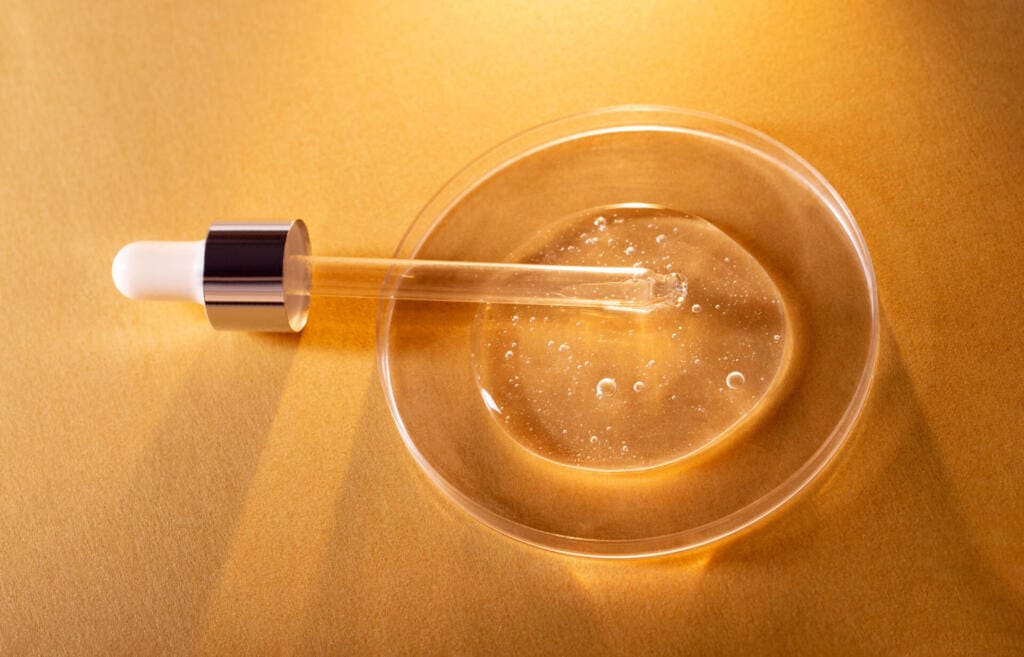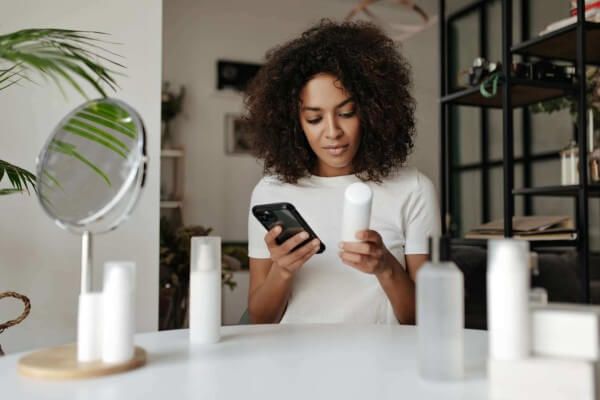Ingredients, Reviva Labs, Skin Care
Can Salicylic Acid Cause Acne? What You Need to Know About This Skincare Staple
When it comes to skincare, one ingredient has become almost synonymous with fighting acne: salicylic acid. Walk down any beauty aisle, and you’ll see it proudly listed on the labels of cleansers, serums, spot treatments, and exfoliants. And for good reason! This beta hydroxy acid (BHA) is known for its ability to unclog pores, reduce inflammation, and treat a variety of skin issues, including acne. But here’s a question that may have crossed your mind—can salicylic acid actually cause acne?
If you’re someone who has experienced breakouts after using a product with salicylic acid, you’re not alone. Despite its reputation as an acne-buster, this ingredient doesn’t always have the same effect for everyone. In fact, some people may find their skin condition worsens before it improves. But why is that? Let’s explore the factors that influence whether salicylic acid helps or harms your skin.
Salicylic Acid: A Friend to Your Skin—Most of the Time
Before we discuss how salicylic acid might cause or contribute to acne, it’s important to understand how it works. Salicylic acid is a keratolytic agent, which means it helps break down dead skin cells and encourages the natural exfoliation process. This is especially useful for those with oily or acne-prone skin, as dead skin buildup can lead to clogged pores, inflammation, and breakouts.
Once applied, salicylic acid penetrates deep into the pores, dissolving the oil and debris that can trigger pimples. It also has anti-inflammatory properties, making it ideal for reducing the redness and swelling that often accompany acne. That’s why it’s commonly used as the go-to treatment for both blackheads and whiteheads.
But—and this is a significant but—not all skin responds to salicylic acid in the same way. Some people may experience irritation, dryness, and even breakouts. For those individuals, using this powerful ingredient may actually backfire, leading to the very problem it’s supposed to solve.
Why Can Salicylic Acid Cause Breakouts?
Salicylic acid doesn’t directly cause acne, but it can trigger skin reactions that may lead to breakouts. Here are a few reasons why this might happen:
1. Overuse and Irritation
Salicylic acid is incredibly effective, but like many powerful ingredients, it’s all about balance. When used in excessive amounts or at concentrations that are too high for your skin type, it can strip the skin of its natural oils. This, in turn, can lead to irritation and a damaged skin barrier.
When your skin is irritated, it can become inflamed and more susceptible to breakouts. In some cases, the irritation may cause a condition known as contact dermatitis, which can look like acne but is actually a form of inflammation caused by a reaction to a product.
2. The Purging Phenomenon
If you’ve ever heard the term “skin purging,” it’s important to know that salicylic acid can sometimes be a culprit. Purging is a temporary phase where your skin breaks out as it adjusts to an active ingredient, like salicylic acid. It occurs because the acid accelerates the skin’s natural exfoliation process, which can bring underlying impurities to the surface.
This might sound alarming, but purging is often considered a good sign. It means that the product is working to speed up the turnover of skin cells. However, during this time, your acne may temporarily worsen before it gets better. Purging typically lasts around four to six weeks. If the breakouts persist beyond this timeframe, it’s possible that salicylic acid isn’t the right ingredient for your skin.
3. Individual Skin Sensitivity
We all have unique skin types, and what works for one person might not work for another. Some individuals have skin that is highly sensitive to salicylic acid, even in low concentrations. Sensitive skin can react to active ingredients with redness, irritation, and—you guessed it—breakouts.
It’s also important to note that those with dry or combination skin are at a higher risk of experiencing negative side effects from salicylic acid. Dry skin can become even drier with overuse, leading to flaking, irritation, and a compromised barrier function, which can exacerbate acne.
4. Using Other Harsh Ingredients
If you’re layering salicylic acid with other strong active ingredients like retinoids, benzoyl peroxide, or even alpha hydroxy acids (AHAs), you could be putting your skin into overdrive. While these ingredients are all effective at targeting acne in their own right, using them in combination without proper spacing or hydration can cause dryness, irritation, and—yes—breakouts.
Skincare is a delicate balance. Mixing multiple potent ingredients, even ones designed to clear acne, can easily backfire and lead to worsening skin conditions. Your skin needs time to heal and regenerate, and too much exfoliation can compromise its natural barrier.

How to Use Salicylic Acid the Right Way
So, if salicylic acid can both help and hurt your skin, how do you use it without risking more acne? Here’s how to maximize the benefits and avoid common pitfalls:
1. Start Slowly
If you’re new to salicylic acid, introduce it gradually. Start by using a product with a low concentration (around 0.5% to 1%) and apply it every other day. This allows your skin to acclimate to the ingredient without overwhelming it.
Once your skin becomes accustomed to the acid, you can increase the frequency of use. But even if your skin tolerates it well, resist the urge to overuse. More isn’t always better, and using salicylic acid too often can lead to dryness and irritation.
2. Hydration Is Key
Since salicylic acid can be drying, it’s essential to pair it with a good moisturizer. Look for one that’s non-comedogenic (won’t clog pores) and designed to hydrate and soothe the skin. Ingredients like hyaluronic acid, glycerin, and ceramides are excellent options for maintaining the skin’s moisture balance while still treating acne.
Hydration can help prevent the irritation and dryness that sometimes lead to breakouts after using salicylic acid. Your skin’s barrier function will stay intact, making it less likely to become inflamed.
3. Limit Other Exfoliants
If you’re using salicylic acid, it’s wise to cut back on other exfoliants, especially during the early stages of treatment. Combining multiple exfoliating ingredients (like AHAs or retinoids) with salicylic acid can lead to over-exfoliation, causing the skin to become inflamed and break out.
Stick to a simple routine while using salicylic acid. A gentle cleanser, a hydrating moisturizer, and sunscreen should be your daily staples. If you want to incorporate other treatments, do so slowly and with caution.
4. Know When to Stop
If your skin becomes excessively irritated or the breakouts don’t seem to be improving after a few weeks, it may be time to stop using salicylic acid. While purging is normal for the first four to six weeks, persistent breakouts could be a sign that the ingredient isn’t compatible with your skin type.
You don’t need to stick to a product that isn’t working for you. There are other acne-fighting ingredients, such as benzoyl peroxide or sulfur, that might be a better fit for your skin.
What the Science Says
Salicylic acid’s reputation as an acne treatment is backed by science. In a clinical study published in the Journal of the American Academy of Dermatology, it was shown that salicylic acid can significantly reduce acne lesions with consistent use over 12 weeks. The study involved 60 participants who used salicylic acid-based cleansers and treatments, and by the end, the majority saw a marked improvement in their skin condition.
Despite its proven efficacy, it’s essential to remember that every skin type is different. A study conducted by the American Journal of Dermatology found that about 10-15% of individuals experienced irritation or breakouts after using salicylic acid, underscoring the importance of patch testing and listening to your skin.
Salicylic Acid: A Powerful Ally, But Not for Everyone
To wrap it up, can salicylic acid cause acne? The short answer is no—it doesn’t directly cause acne. However, it can trigger reactions that may lead to breakouts, especially if used incorrectly or if your skin is sensitive to the ingredient. Understanding your skin’s needs and starting slowly with salicylic acid can help you harness its benefits without the drawbacks.
If you’re experiencing breakouts after using salicylic acid, it’s possible that your skin is purging, or you may need to adjust your routine to include more hydration and gentler products. Ultimately, salicylic acid is a powerful tool in the fight against acne, but it’s not one-size-fits-all. Listen to your skin, and don’t be afraid to switch things up if necessary.
Salicylic acid remains a go-to for many, but skincare is personal. With the right approach, you can determine if this acne-fighter deserves a permanent spot in your routine or if it’s time to explore other options.







